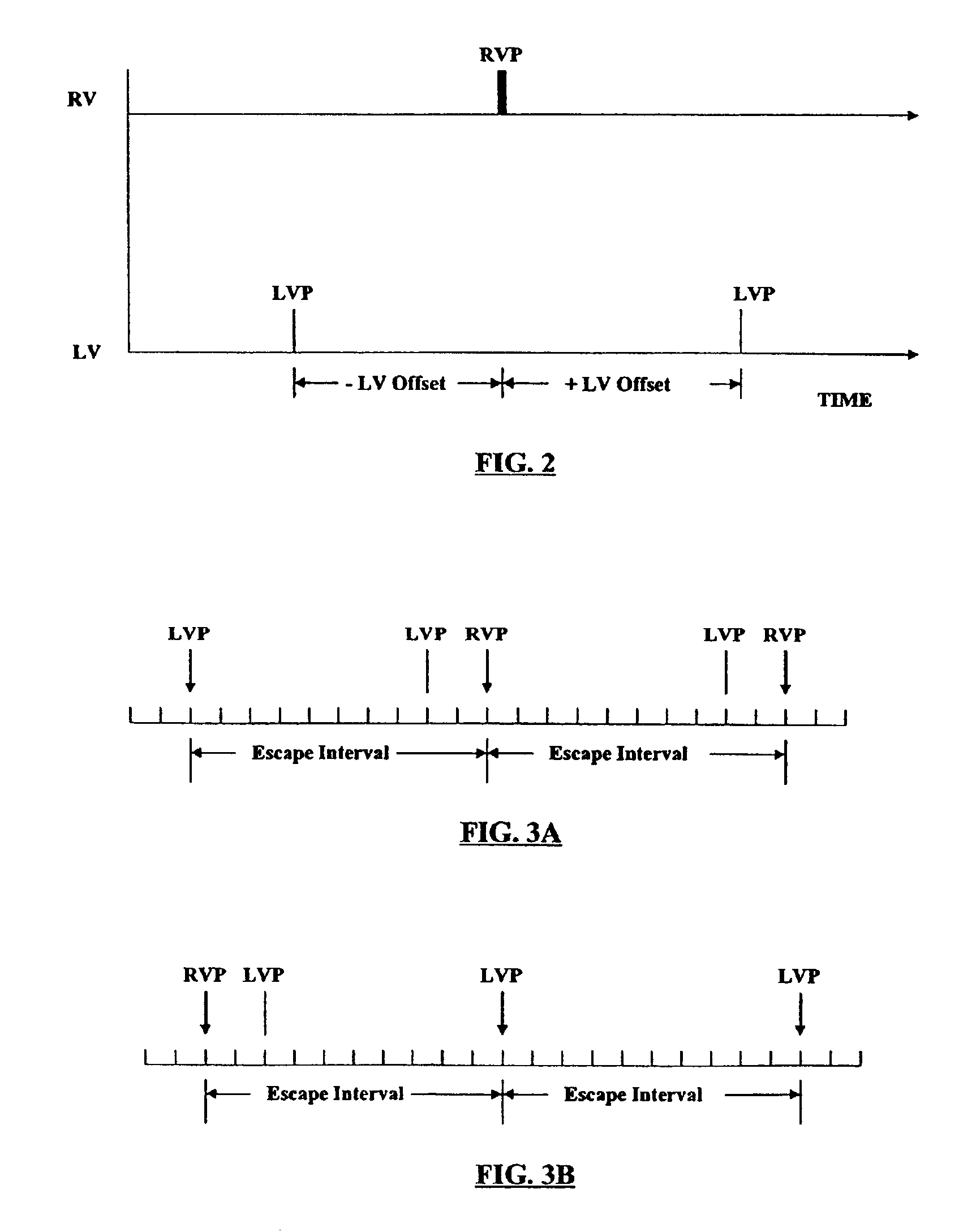Mode transition timing for synchronized pacing
a transition timing and synchronized pacing technology, applied in the direction of therapy, heart stimulators, internal electrodes, etc., can solve the problem that shortening the pacing interval may have adverse effects
- Summary
- Abstract
- Description
- Claims
- Application Information
AI Technical Summary
Benefits of technology
Problems solved by technology
Method used
Image
Examples
Embodiment Construction
[0011]As is described more fully below, a pacing mode defines how pacing pulses are delivered to the heart by a pacemaker in response to sensed events and expiration of specified time intervals, the latter sometimes referred to as escape intervals. Certain pacing modes that pace multiple sites, such as resynchronization pacing, may define different pacing instants for different pacing sites with respect to the expiration of an escape interval. A pacemaker may be capable of operating in a number of different pacing modes and be capable of transitioning between modes either upon command from an external programmer or automatically under certain circumstances. When transitioning to or from such a pacing mode, a pacing site may be paced at a shorter interval than would otherwise be allowed by the pacemaker. This may have the effect of triggering the fault-protection circuitry in the pacemaker which is designed to protect against overpacing. There is also the risk that pacing a ventricle...
PUM
 Login to View More
Login to View More Abstract
Description
Claims
Application Information
 Login to View More
Login to View More - R&D
- Intellectual Property
- Life Sciences
- Materials
- Tech Scout
- Unparalleled Data Quality
- Higher Quality Content
- 60% Fewer Hallucinations
Browse by: Latest US Patents, China's latest patents, Technical Efficacy Thesaurus, Application Domain, Technology Topic, Popular Technical Reports.
© 2025 PatSnap. All rights reserved.Legal|Privacy policy|Modern Slavery Act Transparency Statement|Sitemap|About US| Contact US: help@patsnap.com



